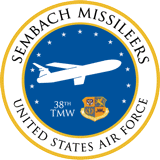 December 9, 2011
December 9, 2011
Vision 2025: USACE, Sembach develop net-zero energy master plan
SEMBACH, Germany — Representatives from Sembach Kaserne, the U.S. Army Corps of Engineers Europe District and Parsons architecture and engineering firm met earlier this month to kick off an energy-based master planning process aimed at achieving net zero energy installation status by 2025.
A net zero energy installation, as defined by the Army, is an installation that produces as much energy as it uses on site, over the course of a year. Sembach is focused on and dedicated to reducing energy consumption throughout the entire base.
“We have about $31 million in energy costs per year. We need to decrease this number,” explained Paul Lindemer, the Kaiserslautern Directorate of Public Works chief of engineering. “Right now, the Army is allocating funds for energy-savings projects. We want to be in the game and get funds allocated to Sembach.”
The installation recruited USACE to develop a “playbook,” identifying energy-savings projects that can be submitted for funding and integrated into the installation master plan.
“We are launching the first energy master plan at Sembach,” said Philip Cohen, the Europe District Installation Support Branch planning section chief.
The Sembach project team is taking a unique approach to net zero planning — assessing the installation’s current and future development and incorporating energy, sustainable and low-impact development, health and quality-of-life considerations into the installation master plan.
“We want to look at the installation as a whole, that’s the key,” said Cohen. “We can’t look at buildings or utilities individually. That’s a great start, but it’s only piecemeal. We have to look at the entire installation.”
Over the next six months, the project team will conduct a thorough assessment of the installation. The first step of the assessment is a review of and update to the area development plan.
“We will take the development plan for Sembach under the master plan for Kaiserslautern and ask the planners to give us a vision of what the garrison will look like by 2025,” Cohen said. “Instead of looking at the installation in terms of unlimited growth we want to look at it just the opposite. An energy master plan is predicated on consolidated, intelligent growth.”
The review is intended to uncover and correct developmental planning inefficiencies. Once inefficiencies are identified the project team can recommend strategies — installing solar panels, insulation and low-energy lighting in buildings, capturing and reusing lost heat, consolidating parking and increasing pedestrian only zones, and installing traffic roundabouts rather than traffic lights — to reduce energy consumption.
The net zero analysis will also include an extensive energy audit of existing buildings, looking at all areas of consumption and indentifying energy deficiencies.
“What we are most interested in is determining our energy drains at Sembach,” Lindemer said.
The project team will assess all enduring buildings on base, pinpointing the facilities and utilities that consume the most energy.
“Currently, they have no real way of quantifying their [energy] consumption,” Rich Gifaldi, Europe District’s sustainable engineering program manager, said. “We are trying to identify how much energy the installation is actually using.”
USACE and Parsons will identify consumption levels for each building by reviewing utility bills, confirming operating schedules, assessing mechanical and electrical systems, and checking building roof and wall envelopes for energy leaks.
“We’re not trying to generate just a pretty picture,” Cohen said. “The team must identify the baseline consumption level. How much energy is being used now? What are the bills? Are there obsolete buildings that should be demolished? This will establish a baseline we can work from.”
Once the energy consumption baseline is established in Sembach, the team can suggest opportunities to conserve and generate energy.
“The architecture and engineering firm will come up with a minimum of 50 projects — installing a white roof and solar panels, capturing and recycling lost heat, utilizing wind turbines — to try to generate renewable energy,” Cohen said.
The assessment findings are scheduled to be presented to the customer in June 2012. As a result of this study, Lindemer said he expects project recommendations with cost estimates.
“We use the Corps [of Engineers] as our expert and trustworthy consultant,” he said. “The Corps is very good at doing analysis and studies.”
This exercise in energy master planning should generate a laundry list of projects for the installation, both repair and renovation work in the near-term and military construction in the longer-term, according to Cohen.
Once the analysis is presented, “we can start choosing where to invest our money first,” Lindemer said. “We will consider what the future of Sembach should look like. We need to have an integrated energy approach.”
http://www.army.mil/article/70579/Vision_2025__USACE__Sembach_develop_net_zero_energy_master_plan/


